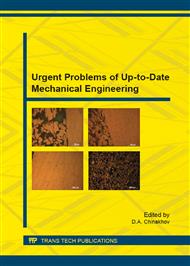[1]
W.A. Backofen, Deformation Processing, Metall. Trans. 4 (1973) 2679-2699.
Google Scholar
[2]
D. Banabic, F. Barlat, O. Cazacu, T. Kuwabara, Advances in anisotropy and formability, International Journal of Material Forming. 3 (2010) 165-189.
DOI: 10.1007/s12289-010-0992-9
Google Scholar
[3]
O. Engler, J. Hirsch, Texture control by thermomechanical processing of AA6xxx Al-Mg-Si sheet alloys for automotive applications - a review, Materials Science and Engineering A. 336 (2002) 249-262.
DOI: 10.1016/s0921-5093(01)01968-2
Google Scholar
[4]
L.S. Tóth, J. Hirsch, P. Van Houtte, On the role of texture development in the forming limits of sheet metals, International Journal of Mechanical Sciences. 38 (1996) 1117-1126.
DOI: 10.1016/0020-7403(95)00110-7
Google Scholar
[5]
W.B. Hutchinson, A. Oscarsson, A. Karlsson, Control of microstructure and earing behaviour in aluminium alloy AA 3004 hot bands, Materials Science and Technology. 5 (1989) 1118-1127.
DOI: 10.1179/mst.1989.5.11.1118
Google Scholar
[6]
A.J. Moses, Electrical steels. Past, present and future developments, IEE Proceedings A: Physical Science. Measurement and Instrumentation. Management and Education. Reviews. 137 (1990) 233-245.
DOI: 10.1049/ip-a-2.1990.0039
Google Scholar
[7]
G.H. Shirkoohi, M.A.M. Arikat, Anisotropic properties of high permeability grain-oriented 3. 25% Si-Fe electrical steel, IEEE Transactions on Magnetics. 30 (1994) 928-930.
DOI: 10.1109/20.312448
Google Scholar
[8]
F. Campbell Jr., Manufacturing Technology for Aerospace Structural Materials, Elsevier, Oxford, (2006).
Google Scholar
[9]
Z.X. Guo, The Deformation and Processing of Structural Materials, Woodhead Publishing, Cambridge, (2005).
Google Scholar
[10]
E.A. De Souza Neto, D. Perić, D.R.J. Owen, Computational Methods for Plasticity: Theory and Applications, Wiley, UK, (2008).
Google Scholar
[11]
M. Sadd, Elasticity: Theory, Applications, and Numerics, Elsevier, Oxford, (2009).
Google Scholar
[12]
R. v. Mises, Mechanik der plastischen Formanderung von Kristallen, ZAMM. 8 (1928) 161-185.
DOI: 10.1002/zamm.19280080302
Google Scholar
[13]
D.R. Bland, The associated flow rule of plasticity, Journal of the Mechanics and Physics of Solids. 6 (1957) 71-78.
Google Scholar
[14]
W. Lode, Versuche uber den Einfluss der mittleren Hauptspannung auf das Fliessen des Metalle Eisen, Kupfer, und Nickel, Zieitschrift fur Phys. 36 (1926) 913-939.
DOI: 10.1007/bf01400222
Google Scholar


